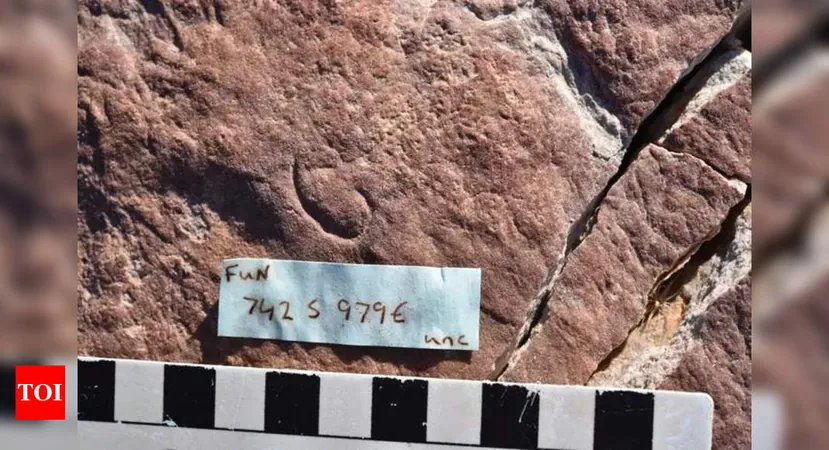
555-Million-Year-Old Fossil Reveals Secrets of Evolution!
2024-12-29
Author: Nur
555-Million-Year-Old Fossil Reveals Secrets of Evolution!
A remarkably preserved fossil, estimated to be 555 million years old, has emerged from the depths of South Australia, providing vital clues about the evolutionary origins of Ecdysozoa, the vast group that includes insects, crustaceans, and nematodes. The discovery of a worm-like organism named Uncus dzaugisi not only fills a critical gap in the fossil record but also supports the theory that Ecdysozoans existed well before the Cambrian explosion, a pivotal event in the history of life on Earth.
This groundbreaking finding uncovers the ancestral roots of Ecdysozoans, which, as the largest and most diverse animal group, make up more than half of all animal species on our planet. Researchers have long grappled with the scarcity of fossil evidence documenting their early ancestors, despite molecular evidence suggesting their existence during the Precambrian period.
The captivating research, titled “An Ediacaran bilaterian with an ecdysozoan affinity from South Australia,” published in *Current Biology*, highlights the fossilized remains of Uncus dzaugisi found in the richly preserved Precambrian rocks of Nilpena Ediacara National Park (NENP). This fossil is particularly striking not only for its age but also as the sole Precambrian representative of Ecdysozoa discovered to date.
Lead researcher Ian Hughes, a Ph.D. candidate from Harvard's Department of Organismic and Evolutionary Biology, remarked on the significance of this find, stating, “Ecdysozoans were prevalent in the Cambrian fossil record, and we know they didn’t just appear out of nowhere. But, until now, we had no concrete fossil evidence to confirm it.”
The fossil was painstakingly extracted from fine-grained sandstone rocks at NENP, a location renowned for its well-preserved Ediacaran lifeforms that captures an ancient seafloor ecosystem. Hughes emphasized the delicate nature of the extraction process, where researchers used hand tools to carefully dig into the rocky terrain. “Imagine pouring concrete over the ocean, waiting a half-billion years, and then flipping it over to discover an entire ecosystem. This locality allows us to document the first animal ecosystems on Earth,” he explained.
Upon studying the cylindrical form of Uncus dzaugisi, researchers observed distinctive features such as a consistent length-to-width ratio, a remarkably rigid cuticle, and curved traces that suggest its evolutionary proximity to modern nematodes. Hughes expressed the excitement surrounding this remarkable discovery, saying, “It’s astonishing to place Ecdysozoans in the Precambrian Eon. Identifying an early member of this diverse lineage sheds light on how these organisms occupied various ecological niches long before the Cambrian explosion.”
This discovery not only enriches our understanding of early life but also opens the door to further exploration of ancient ecosystems and their inhabitants. As scientists continue to investigate the implications of this find, the journey into the evolutionary past promises to be as exhilarating as it is enlightening.
Stay tuned for more updates on this groundbreaking discovery and what it means for the future of paleontology!
 Brasil (PT)
Brasil (PT)
 Canada (EN)
Canada (EN)
 Chile (ES)
Chile (ES)
 Česko (CS)
Česko (CS)
 대한민국 (KO)
대한민국 (KO)
 España (ES)
España (ES)
 France (FR)
France (FR)
 Hong Kong (EN)
Hong Kong (EN)
 Italia (IT)
Italia (IT)
 日本 (JA)
日本 (JA)
 Magyarország (HU)
Magyarország (HU)
 Norge (NO)
Norge (NO)
 Polska (PL)
Polska (PL)
 Schweiz (DE)
Schweiz (DE)
 Singapore (EN)
Singapore (EN)
 Sverige (SV)
Sverige (SV)
 Suomi (FI)
Suomi (FI)
 Türkiye (TR)
Türkiye (TR)
 الإمارات العربية المتحدة (AR)
الإمارات العربية المتحدة (AR)